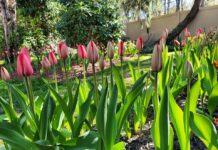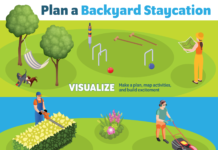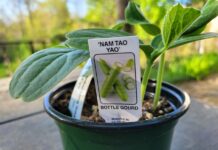ALEXANDRIA, Va. — The TurfMutt Foundation, which has advocated for the care and use of yards, parks and other green spaces for 15 years, has long been an advocate of supporting pollinators like bees, butterflies, hummingbirds and bats in managed landscapes.
In celebration of National Pollinator Month, TurfMutt reminds everyone about the important role backyards and community green spaces play for these small but mighty backyard critters and their pollinating powers. Pollinators are responsible for one out of every three bites of food we take, according to the Pollinator Partnership.
“Our cities and neighborhoods have disrupted the natural ecosystem pathways that pollinators rely upon, but our backyards and community parks can help by providing these important creatures a vital link to habitat and food,” said Kris Kiser, President & CEO of the TurfMutt Foundation. “We encourage every homeowner and community to plant flowering plants and shrubs, in addition to trees and grass, in their managed landscapes.”
Here are 5 ways homeowners can support pollinators in their own backyard:
1. Remember Right Plant, Right Place
Select flowering plants that thrive in your yard’s conditions, taking into consideration things like climate zone (check out the USDA’s Plant Hardiness Zone Map), soil type, the sun/shade ratio and average rainfall. If a plant has evolved to thrive in your microclimate, it’s a good bet the pollinators in your community will prefer it, too. The Pollinator Partnership has free pollinator planting guides that anyone can download here.
2. Have a Balanced Landscape
Plant a healthy balance of real grasses, garden flowers, shrubs and trees that bloom at different times of the year. Different colored plants that have their own smell and grow to various heights will attract different types of pollinator species. By keeping this in mind and planting accordingly, you can provide year-round pollinator support.
3. Create a “Target”
Plant in clusters to make plants an easy target for pollinators to find. This will also increase pollination efficiency. It’s easier, faster and less wasteful for pollinators to work on a single plant species in one central area versus having to seek our individual plants.
4. Right-Size Your Effort
Remember, the size of your yard doesn’t matter. Pollinator pit stops can be created anywhere from urban condominium balconies and small home yards, to large estate lots and farms. Creativity is all that is needed. Window planters, patio containers, raised garden boxes, and even hanging planters can all offer nectar to pollinators. If you have no outdoor space to call your own, consider volunteering for a local pollinator organization, at a local park or community garden.
5. Remember the “Extras”
Pollinators are hard-working and they need clean water and a place to rest. Backyard water sources can be in the form of a water feature or birdbath. You can even set out a shallow water container filled with rocks for pollinator perching.












